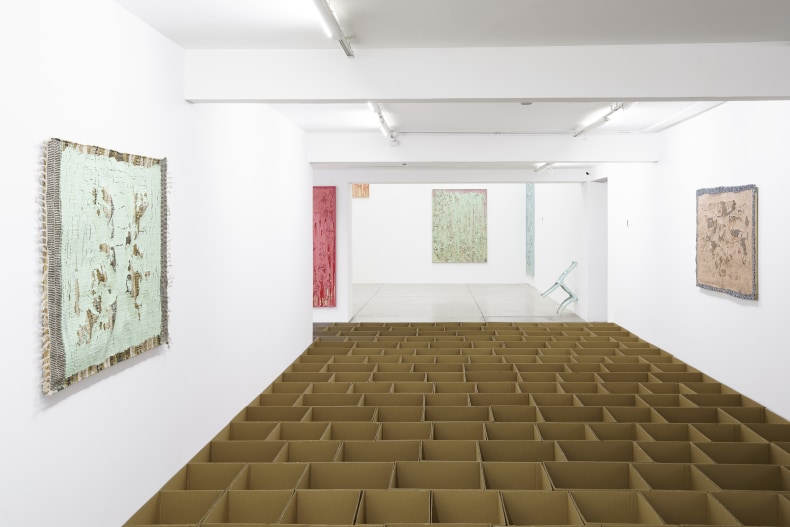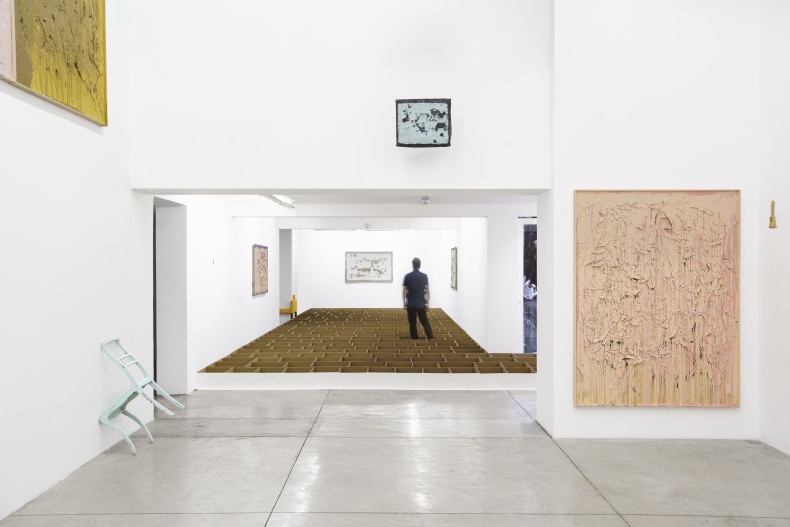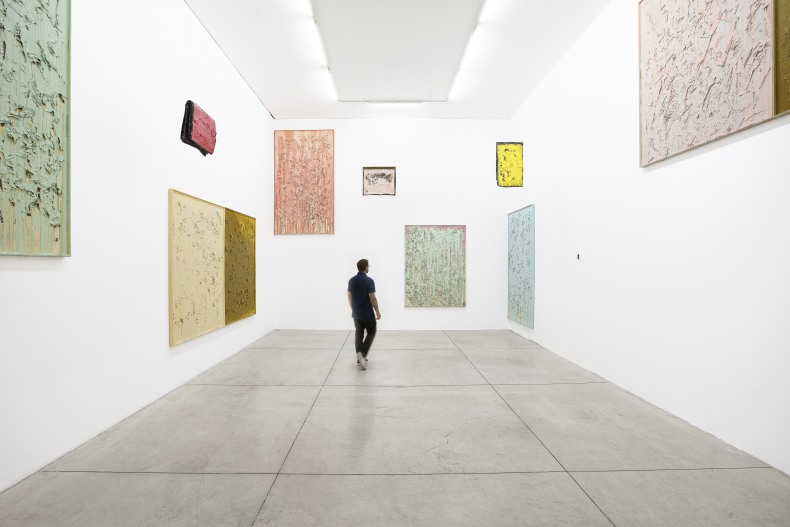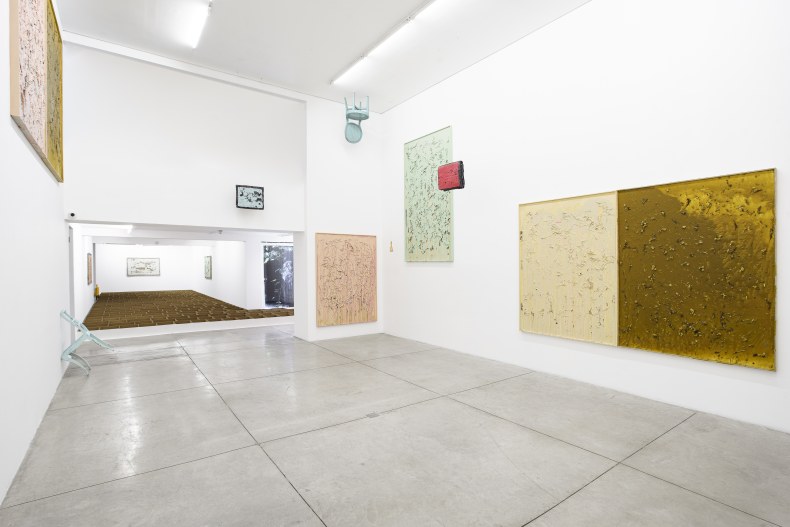Nara Roesler is pleased to present Inhabiting Together, Carlos Bunga's (Porto, Portugal, 1976) first solo show at the gallery. Bringing together works recently made in Brazil and new installations, the show is accompanied by a text by Ivo Mesquita and presents key elements of the artist's research. For over 20 years, he has used expanded painting as the core of his production, forging close relationships with architecture, installation, video, and performance.
In a polarized and fractured world, Carlos Bunga invites us to imagine a world in which we can Inhabit Together. The title of the show also gives us clues to understanding the poetics and themes that arouse the artist's interest. Since the beginning of his career, Bunga has explored architecture in his work, as well as the idea of home and domesticity. In his view, architecture is not just a formalist experience, where form follows function. For him, spaces, enclosures, and structures are designed to house relationships between individuals and their subjectivities, memories, and feelings. From this perspective, the house is a privileged space for understanding the human and "living" aspect of architecture.
Another very relevant aspect of his practice is the use of materials of a transitory and ephemeral nature, such as cardboard and adhesive tape, which are widely used by the artist in installation works that form hybrid spaces, susceptible to being modified, as was the case with the Mausoleum intervention, carried out in 2012, which occupied the octagon of the Pinacoteca de São Paulo, and more recently, the Contra la extravagancia del deseo intervention, which occupied the Crystal Palace of the Reina Sofia Museum in Madrid, Spain, in 2022. Using precarious and ephemeral materials, the public is invited to go beyond contemplating the project by walking through the structures and integrating themselves into the works.
For the gallery, the artist has proposed two works using the material: one in the showcase, which will be occupied by architectural structures made of cardboard; the other, based on the idea of the loss of geographical and social territories, is similar to Occupy, a recent installation done in 2020 at the Museum of Contemporary Art in Toronto, in which cardboard boxes occupied a large part of the exhibition space and through which the public had to walk and cross to reach the other spaces.
Even in participatory, installation, and performance works, the pictorial element is almost always present. According to Bunga: "Painting is directly or indirectly present in all my work. It is the basis of my thinking, a multifaceted place full of layers, perspectives and smells." This process is evident in works recently produced in Brazil, in which the artist makes use of overlays of found packaging, beeswax, leaves of local vegetation, and acrylic paint on plywood.
The colors he uses in his works, although bright and vibrant, are discontinuous and crackled, evoking transience, which is deeply related to nature and the human experience, both of which are transitory. Carlos Bunga's crackled paint in vibrant colors could recently be seen by the Brazilian public during the 35th São Paulo Biennial - choreographies of the impossible, in which the artist presented Habitar el color, a site-specific commissioned work that invited visitors to a sensory experience of walking on a thick layer of crackled paint and feeling the color and its ephemeral nature with their feet.
Layers of crackled colors can also be seen in other works in the exhibition. The artist inscribes layers of paint on collected carpets and local fabrics, which end up forming not only new textures, but also shapes that resemble maps and cartographies, which raises questions related to territoriality and belonging, which are both recurrent in the artist's research, as well as sculptural and installation works that make use of pieces of furniture.
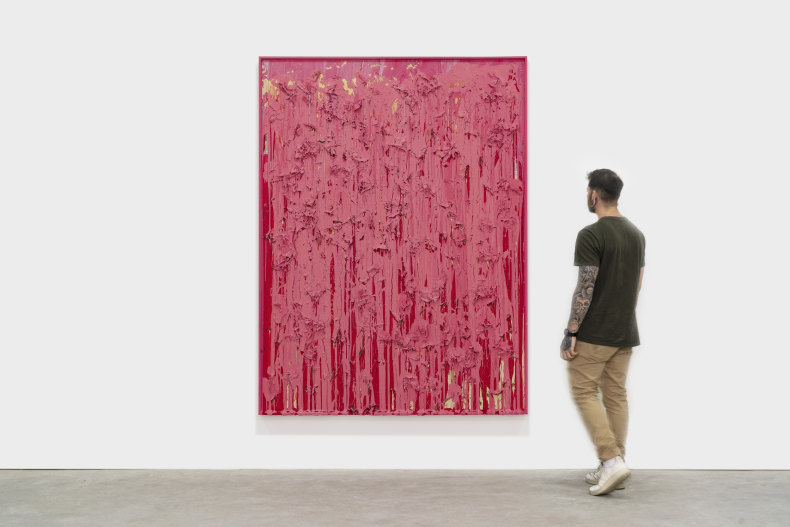
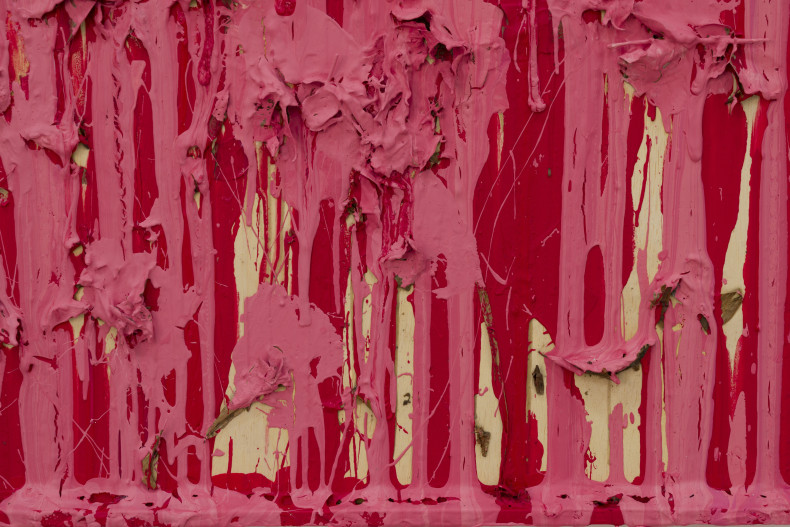
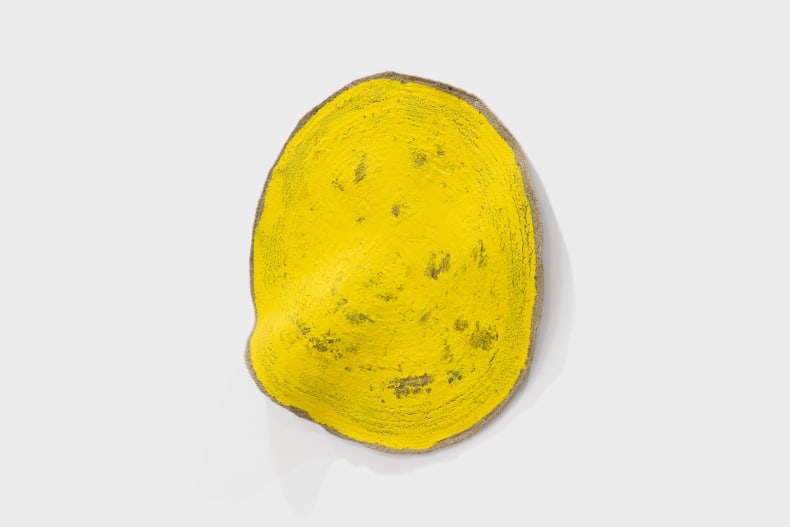
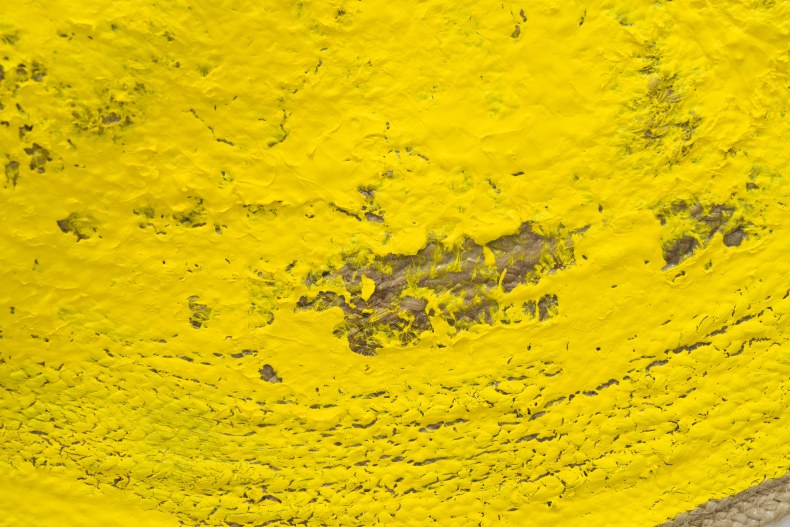


![Carlos Bunga Free Standing Painting #61 [Exempt painting], 2023 cola PVC e tinta látex sobre manta 9 x 50 x 40 cm](https://artlogic-res.cloudinary.com/w_790,h_700,c_limit,f_auto,fl_lossy/ws-nararoesler/usr/exhibitions/images/exhibitions/255/54176_cb_flaviofreire_high_1.jpg)
![Carlos Bunga Free Standing Painting #61 [Exempt painting], 2023 cola PVC e tinta látex sobre manta 9 x 50 x 40 cm](https://artlogic-res.cloudinary.com/w_790,h_700,c_limit,f_auto,fl_lossy/ws-nararoesler/usr/exhibitions/images/exhibitions/255/54176_cb_flaviofreire_high_5.jpg)

